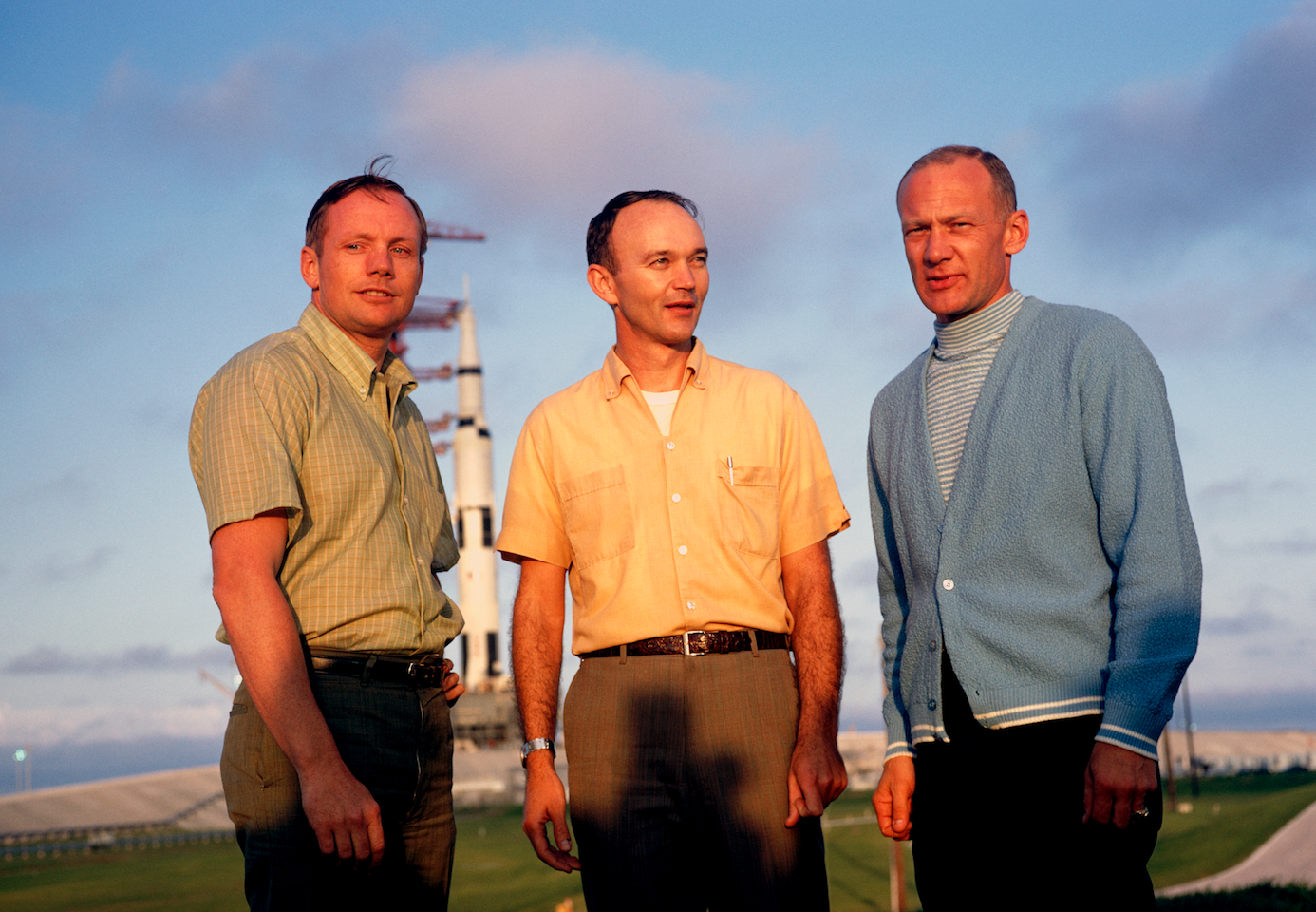 The Apollo 11 astronauts, from left, Neil Armstrong, Michael Collins, Edwin E. ‘Buzz’ Aldrin.
The Apollo 11 astronauts, from left, Neil Armstrong, Michael Collins, Edwin E. ‘Buzz’ Aldrin.
Otis Imboden, National Geographic Image Collection
This post originally appeared on LinkedIn, and was written by Josh Weinberg, Senior Vice President, Integrated Media at National Geographic
Space. It’s vast, monumental, awe-inspiring. But, for all its immense and endless size, Space can also be intimate and deeply personal. It holds a mystery that is particular and different for each of us. As National Geographic set out to commemorate the 50th anniversary of the Apollo 11’s lunar landing, it is this dichotomy that presented both a challenge and an opportunity.
Bringing the 50th anniversary to life means mapping the adventure, promise and excitement of space exploration, past, present and future, across all our platforms. It means capturing the thrilling intersection where adventure meets wonder, teamwork feeds innovation, and curiosity collides with exploration.
National Geographic has always been a brand that is of both the head and the heart. We tell the world’s story, while helping people connect to the awe and promise of the place we call home. That’s why we created Starstuck, our space franchise featuring television special programming, commemorative books, new maps, groundbreaking digital content, space curriculum materials for classrooms, stargazing guides and live speaker events across the country and around the world.
Once humans began dreaming of leaving Earth, National Geographic continued to play a unique role in space history. According to award-winning author and historian Douglas Brinkley in his new book American Moonshot, National Geographic magazine profoundly influenced President John F. Kennedy’s quest for reaching the moon. He would read Allan C. Fisher’s article “Explaining Tomorrow with the Space Agency” in the magazine—and, from there, envisioned sending a man to the moon within a decade.
In February, 1969, our small enterprising cartography team, at the direction of NASA, published the best reference at the time using the best possible photography yet available of the moon. Fast forward 50 years, and through a mosaic of some 15,000 images from the Lunar Reconnaissance Orbiter, we were able produce a special high-resolution digital elevation model. Our new map has been released with our special July issue along with our amazing interactive Atlas of Moon and special features and galleries.
National Geographic photographer Otis Imboden was asked specifically by NASA to embed himself over the many months of Apollo mission training to ensure it was well documented and shared with the world. His stunning, revealing work is also being shared across our print, social, and digital distribution.
National Geographic even indirectly influenced the branding of the Apollo 11 mission. Following tradition, the Apollo 11 crew was given the task of designing its mission patch. Command Module Pilot for Apollo 11, Michael Collins wanted to keep names off the patch because he wanted the design to represent not only the astronauts but all who made the mission possible. It was fellow astronaut, Jim Lovell, who suggested the eagle, as the focus of the patch. Running with that proposal, Michael Collins found a picture of an eagle in a National Geographic book about birds: "Water, Prey, and Game Birds of North America." Collins traced the image, and the iconic patch was born.
All Apollo missions carried a tiny National Geographic flag on board. One of which is on display at our Washington, D.C. headquarters, signifying our long, meaningful and ongoing connection to the space program and our national fascination with the moon.
As NASA, Space X, Blue Origin and others fuel a new Space Age, National Geographic is poised to capture the moments that capture our imagination.